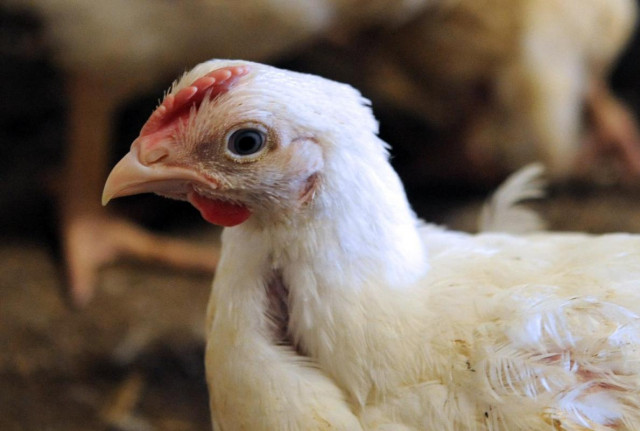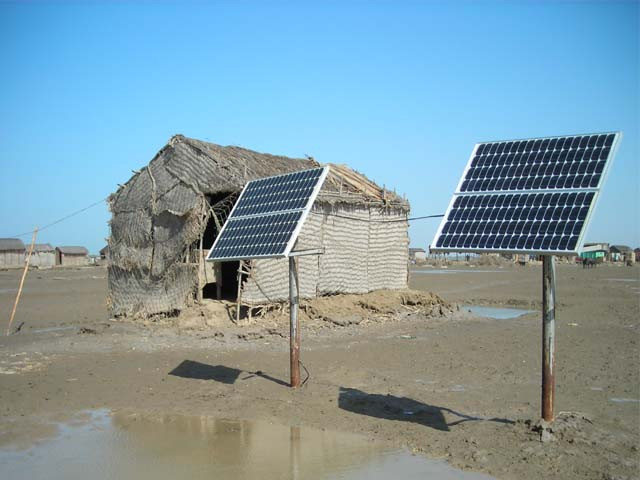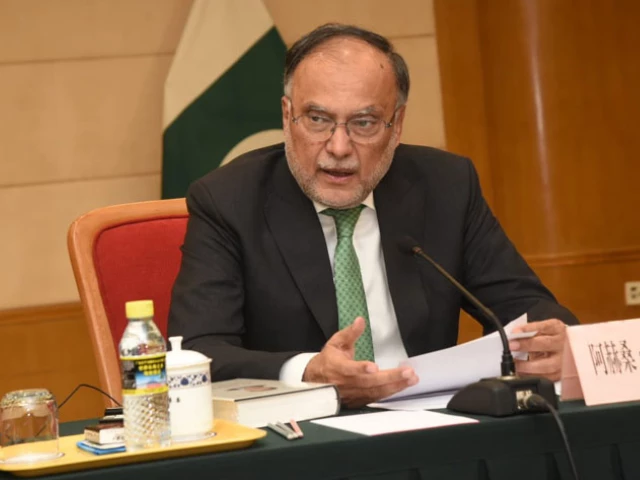Business
Weekly SPI rises 4.34% YoY on food price volatility | The Express Tribune

KARACHI:
Pakistan’s short-term inflation, measured by the Sensitive Price Indicator (SPI), rose 4.34% year-on-year (YoY) during the week ended October 9, 2025, according to data released by the Pakistan Bureau of Statistics (PBS).
The annual increase reflects persistent pressure from rising food and energy prices, even as the weekly trend showed only a marginal rise of 0.17%.
PBS report revealed that price increases for chicken, wheat flour, onions and eggs were the main contributors to the latest uptick, while prices for tomatoes, bananas and potatoes registered notable declines.
The weekly SPI, which tracks prices of 51 essential commodities across 50 markets in 17 cities, showed price hikes for 21 items (41.18%), reduction in six items (11.76%) and no change in 24 items (47.06%).
The most notable increases were recorded in chicken (8.92%), onions (7.47%) and wheat flour (5.74%), three of the most widely consumed food items in Pakistani households. Other commodities showing a rise included eggs (2.25%), gur (jaggery) (1.70%), garlic (0.86%), vegetable ghee – 1kg (0.86%), vegetable ghee – 2.5kg (0.59%), firewood (0.50%) and washing soap (0.23%).
Conversely, a significant drop was noted in tomato prices, which fell 11.34%, following a sharp increase in previous weeks. Other items showing a decline included bananas (1.29%), potatoes (0.93%), LPG (0.59%), pulse gram (0.35%) and mustard oil (0.07%).
Across consumption groups, the SPI increased between 0.14% and 0.20%, indicating that inflationary pressures were felt across all income brackets. The highest weekly increase of 0.20% was recorded for the fourth quintile (upper-middle-income households), while the lowest rise of 0.14% was seen in the lowest-income group.
On a YoY basis, the SPI rose 4.34%, reflecting continued inflationary strain despite some recent stabilisation in food and fuel prices. The data highlighted steep annual increases in several essential commodities, led by tomatoes (109.82%), ladies’ sandals (55.62%), sugar (36.08%) and gas charges for the lowest slab (29.85%).
Prices of wheat flour (17.70%), pulse moong (15.90%), gur (13.79%), beef (12.66%), diesel (12.57%) and vegetable ghee (up to 11.86%) also showed notable hikes over the past year.
However, several commodities exhibited price relief compared to last year. Prices of onions dropped sharply by 43.16%, garlic fell by 28.16%, electricity charges for Q1 by 26.26%, pulse gram by 24.97% and chicken by 24.30%. Prices of potatoes (-18.51%), pulse mash (-18.17%) and tea (-17.93%) also declined.
PBS data suggests that while the pace of inflation has moderated from last year’s high levels, food price volatility remains a key concern. Upcoming seasonal shifts and changes in fuel and energy tariffs could influence price dynamics in the coming weeks.
Business
Private sector data: Over 2 lakh private companies closed in 5 years; govt flags monitoring for suspicious cases – The Times of India

NEW DELHI: The government on Monday said that over the past five years, more than two lakh private companies have been closed in India.According to data provided by Minister of State for Corporate Affairs Harsh Malhotra in a written reply to the Lok Sabha, a total of 2,04,268 private companies were shut down between 2020-21 and 2024-25 due to amalgamation, conversion, dissolution or being struck off from official records under the Companies Act, 2013.Regarding the rehabilitation of employees from these closed companies, the minister said there is currently no proposal before the government, as reported by PTI. In the same period, 1,85,350 companies were officially removed from government records, including 8,648 entities struck off till July 16 this fiscal year. Companies can be removed from records if they are inactive for long periods or voluntarily after fulfilling regulatory requirements.On queries about shell companies and their potential use in money laundering, Malhotra highlighted that the term “shell company” is not defined under the Companies Act, 2013. However, he added that whenever suspicious instances are reported, they are shared with other government agencies such as the Enforcement Directorate and the Income Tax Department for monitoring.A major push to remove inactive companies took place in 2022-23, when 82,125 companies were struck off during a strike-off drive by the corporate affairs ministry.The minister also highlighted the government’s broader policy to simplify and rationalize the tax system. “It is the stated policy of the government to gradually phase out exemptions and deductions while rationalising tax rates to create a simple, transparent, and equitable tax regime,” he said. He added that several reforms have been undertaken to promote investment and ease of doing business, including substantial reductions in corporate tax rates for existing and new domestic companies.
Business
Pakistan’s Textile Exports Reach Historic High in FY2025-26 – SUCH TV

Pakistan’s textile exports surged to $6.4 billion during the first four months of the 2025-26 fiscal year, marking the highest trade volume for the sector in this period.
According to the Pakistan Bureau of Statistics (PBS), value-added textile sectors were key contributors to the growth.
Knitwear exports reached $1.9 billion, while ready-made garments contributed $1.4 billion.
Significant increases were observed across several commodities: cotton yarn exports rose 7.74% to $238.9 million, and raw cotton exports jumped 100%, reaching $2.6 million from zero exports the previous year.
Other notable gains included tents, canvas, and tarpaulins, up 32.34% to $53.48 million, while ready-made garments increased 5.11% to $1.43 billion.
Exports of made-up textile articles, excluding towels and bedwear, rose 4.17%, totaling $274.75 million.
The report also mentioned that the growth in textile exports is a result of improved global demand and stability in the value of the Pakistani rupee.
Business
Peel Hunt cheers ‘positive steps’ in Budget to boost London market and investing

UK investment bank Peel Hunt has given some support to under-pressure Chancellor Rachel Reeves over last week’s Budget as it said efforts to boost the London market and invest in UK companies were “positive steps”.
Peel Hunt welcomed moves announced in the Budget, such as the stamp duty exemption for shares bought in newly listed firms on the London market and changes to Isa investing.
It comes as Ms Reeves has been forced to defend herself against claims she misled voters by talking up the scale of the fiscal challenge in the run-up to last week’s Budget, in which she announced £26 billion worth of tax rises.
Peel Hunt said: “Following a prolonged period of pre-Budget speculation, businesses and investors now have greater clarity from which they can start to plan.
“The key measures were generally well received by markets, particularly the creation of additional headroom against the Chancellor’s fiscal rules.
“Initiatives such as a stamp duty holiday on initial public offerings (IPOs) and adjustments to the Isa framework are intended to support UK capital markets and encourage investment in British companies.
“These developments, alongside the Entrepreneurship in the UK paper published simultaneously, represent positive steps toward enhancing the UK’s attractiveness for growth businesses and long-term investors.”
Ms Reeves last week announced a three-year stamp duty holiday on shares bought in new UK flotations as part of a raft of measures to boost investment in UK shares.
She also unveiled a change to the individual savings account (Isa) limit that lowers the cash element to £12,000 with the remaining £8,000 now redirected into stocks and shares.
But the Chancellor also revealed an unexpected increase in dividend tax, rising by 2% for basic and higher rate taxpayers next year, which experts have warned “undermines the drive to increase investing in Britain”.
Peel Hunt said the London IPO market had begun to revive in the autumn, although listings activity remained low during its first half to the end of September.
Firms that have listed in London over recent months include The Beauty Tech Group, small business lender Shawbrook and tinned tuna firm Princes.
Peel Hunt added that deal activity had “continued at pace” throughout its first half, with 60 transactions announced across the market during that time and 10 active bids for FTSE 350 companies, as at the end of September.
Half-year results for Peel Hunt showed pre-tax profits jumped to £11.5 million in the six months to September 30, up from £1.2 million a year earlier, as revenues lifted 38.3%.
Peel Hunt said its workforce has been cut by nearly 10% since the end of March under an ongoing savings drive, with full-year underlying fixed costs down by around £5 million.
Steven Fine, chief executive of Peel Hunt, said: “The second half has started strongly, with the group continuing to play leading roles across both mergers and acquisitions and equity capital markets mandates.”
-

 Sports1 week ago
Sports1 week agoWATCH: Ronaldo scores spectacular bicycle kick
-

 Entertainment1 week ago
Entertainment1 week agoWelcome to Derry’ episode 5 delivers shocking twist
-

 Politics1 week ago
Politics1 week agoWashington and Kyiv Stress Any Peace Deal Must Fully Respect Ukraine’s Sovereignty
-

 Business1 week ago
Business1 week agoKey economic data and trends that will shape Rachel Reeves’ Budget
-

 Tech6 days ago
Tech6 days agoWake Up—the Best Black Friday Mattress Sales Are Here
-

 Politics1 week ago
Politics1 week ago53,000 Sikhs vote in Ottawa Khalistan Referendum amid Carney-Modi trade talks scrutiny
-

 Fashion1 week ago
Fashion1 week agoCanada’s Lululemon unveils team Canada kit for Milano Cortina 2026
-

 Tech23 hours ago
Tech23 hours agoGet Your Steps In From Your Home Office With This Walking Pad—On Sale This Week


1729471601-0/image-(8)1729471601-0-640x480.webp)








